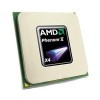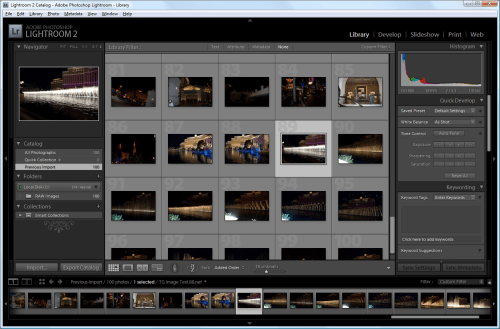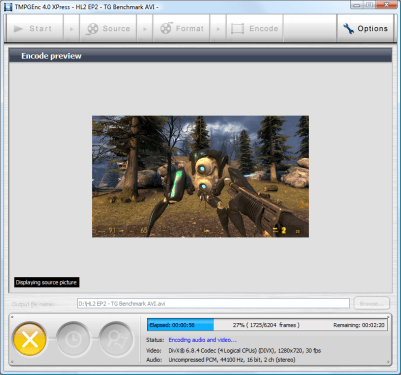- Qualcomm Launches Snapdragon 4 Gen 2 Mobile Platform
- AMD Launches Ryzen PRO 7000 Series Mobile & Desktop Platform
- Intel Launches Sleek Single-Slot Arc Pro A60 Workstation Graphics Card
- NVIDIA Announces Latest Ada Lovelace Additions: GeForce RTX 4060 Ti & RTX 4060
- Maxon Redshift With AMD Radeon GPU Rendering Support Now Available
AMD Phenom II X4 810 & X3 720 Black Edition

Phenom II may have just launched last month, but AMD didn’t want to waste time in following-up with their first AM3-based processors. We’re taking a look at two, including the X4 810 and X3 720 ‘Black Edition’. Both offer great performance at their respective price-points, but the X3 became the more appealing chip, thanks to its overclocking ability.
Page 5 – Multi-Media: Adobe Lightroom, TMPGEnc Xpress
Photo manipulation benchmarks are more relevant than ever, given the proliferation of high-end digital photography hardware. For this benchmark, we test the system’s handling of RAW photo data using Adobe Lightroom, an excellent RAW photo editor and organizer that’s easy to use and looks fantastic.
For our testing, we take 100 RAW files (in Nikon’s .NEF file format) which have a 10-megapixel resolution, and export them as JPEG files in 1000×669 resolution, similar to most of the photos we use here on the website. Such a result could also be easily distributed online or saved as a low-resolution backup. This test involves not only scaling of the image itself, but encoding in a different image format. The test is timed indirectly using a stopwatch, and times are accurate to within +/- 0.25 seconds.

The results here are quite interesting, I must admit. Despite the fact that AMD’s X4 810 is slower than Intel’s Q9400, it managed to outpace it by a little more than five seconds. Both CPUs feature almost identical Cache structures as well, making this result even more noteworthy. The same applies to the X3 720 results, as it beat out every Intel Dual-Core and also the Quad-Core Q8200.
TMPGEnc Xpress 4.5
When it comes to video transcoding, one of the best offerings on the market is TMPGEnc Xpress. Although a bit pricey, the software offers an incredible amount of flexibility and customization, not to mention superb format support. From the get go, you can output to DivX, DVD, Video-CD, Super Video-CD, HDV, QuickTime, MPEG, and more. It even goes as far as to include support for Blu-ray video!
There are a few reasons why we choose to use TMPGEnc for our tests. The first relates to the reasons laid out above. The sheer ease of use and flexibility is appreciated. Beyond that, the application does us a huge favor by tracking the encoding time, so that we can actually look away while an encode is taking place and not be afraid that we’ll miss the final encoding time. Believe it or not, not all transcoding applications work like this.
For our test, we take a 0.99GB high-quality DivX H.264 AVI video of Half-Life 2: Episode Two gameplay with stereo audio and transcode it to the same resolution of 720p (1280×720), but lower the bit rate in order to attain a modest file size. This test also utilizes the SSE instruction sets, either SSE2 or SSE4, depending on what the chip supports.

Before this test even ran, I knew what the results were going to be, and to be honest, half of the issue is the fault of our configuration, but it does prove what kind of a difference SSE4 can make against SSE2. We first found that out way back with our QX9650 review. Simply put, if an application utilizes SSE4, it will perform its tasks much faster on CPUs that also support it. Since adoption has been relatively low, this isn’t really a huge loss to AMD, but it’s still one that should be noted if you are a huge multi-media buff (as in encode/transcode, not playback).
Support our efforts! With ad revenue at an all-time low for written websites, we're relying more than ever on reader support to help us continue putting so much effort into this type of content. You can support us by becoming a Patron, or by using our Amazon shopping affiliate links listed through our articles. Thanks for your support!







